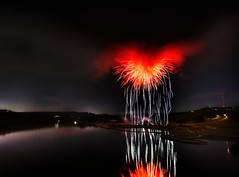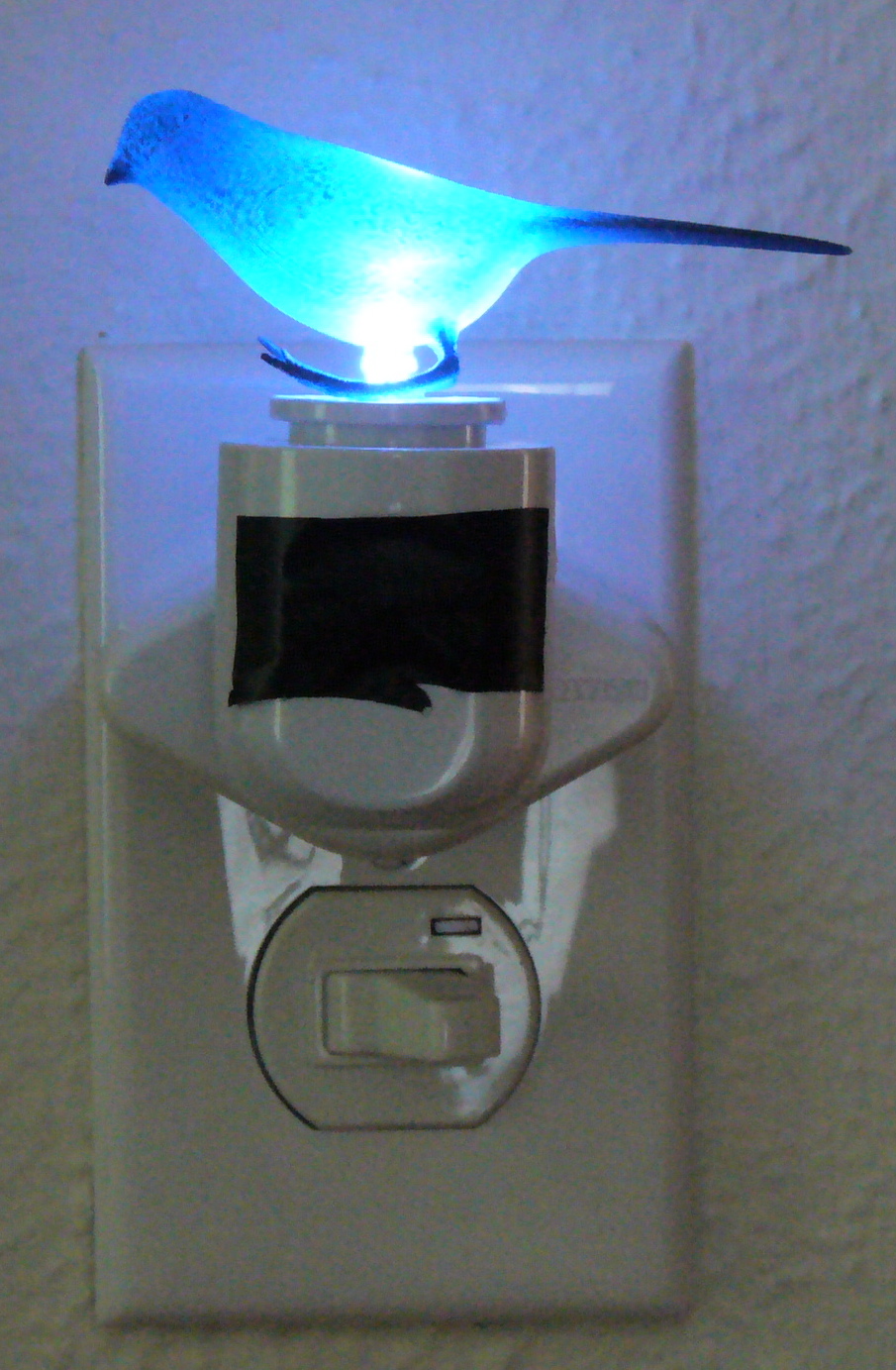
Heart of Satan – What it looks like when fireworks explode inside of a storm cloud over a river
Originally uploaded by Stuck in Customs
Happy Friday everyone! Here’s a neat picture taken using some special photographic techniques.

Heart of Satan – What it looks like when fireworks explode inside of a storm cloud over a river
Originally uploaded by Stuck in Customs
Happy Friday everyone! Here’s a neat picture taken using some special photographic techniques.
A little while ago I embarked on a search for a blue canary night light for my daughter. After not finding one, I decided to make one. Several prototypes later, I’m almost ready to sell them (at my site, bluecanarynightlight.com).
Today I got some new LED night light bases to try. They aren’t going to work for the final sale models, but I was finally (with the aid of a plug rotater) able to get a blue canary night light set up by the light switch in my daughter’s room:

The final model won’t have legs, and will be bigger (as is the current prototype), but I was glad to be able to make use of this older prototype. I think I’ll be able to get better light diffusion with the final models as well — they’ll be dyed instead of painted.
If you want to hear the story of how I moronically made sparks shoot out of my wall installing the combo switch/receptacle today, let me know in the comments.
Today I’m really excited to finally show you something that’s been in the works, both in implementation and in the planning stages, for a long time. The CardioSolv Simulation Manager.
Running cardiac electrophysiology (and mechanics) simulations has traditionally been really complicated. It involved learning a bunch of UNIX command-line tricks, dealing with queuing systems and their associated script files, and so on. Furthermore, there are many, many options in a sophisticated cardiac simulator, and the novice user (and even the expert) can easily get lost in all of the choices.
We’ve taken years of experience setting up, running, and analyzing simulations to build a really cool (excuse my excitement) web interface that handles all of the dirty work, and guides the user through the important choices when running simulations.
The video below is my first demo. In it, I demonstrate how to create a plane wave moving across a sheet of tissue, then create a spiral wave, all from the web interface.

Mine
Originally uploaded by Amarand Agasi
Here’s a Domo-kun Hearty Friday. I actually found this image last week, but had it stashed away. Have a good weekend!
Today I added two more accountability partner types to didyoudo.it; habit and fitness accountability partners. Is there another type of partner that I should list? Let me know by commenting or one of the other methods listed on my contact page.